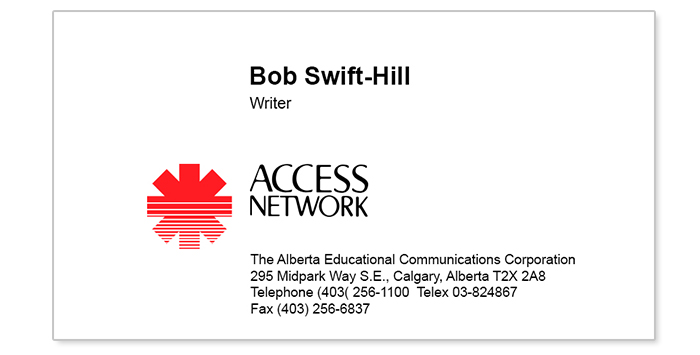What is your first childhood memory of television? Mine is the funeral of President John F. Kennedy. On Sunday, November 24, 1963, I remember watching the broadcast of the horse-drawn caisson and procession to the US Capitol. I sat, mesmerized, watching it on our grainy black and white rabbit-eared television. I was too young to understand what the funeral meant, but I sensed the massive emotional gravity of it all.

In retrospect, many commentators have pointed out that this tragic event was a pivotal point for expanding role of broadcast television in our lives. In my teens, my concept of commercial television was simply that it was a medium that cleverly masked gaps between advertisements. The essay collections of Writer Harlan Ellison (“The Glass Teat and The Other Glass Teat”) heavily influenced my thinking. I soaked up his furies and railings. I couldn’t help but wonder: Where will we find the “good” in this? The answer would take its sweet time.
In my third year of university, in a class on writing freelance for publications, our professor shocked us when he upended traditional teaching with a fascinating technique. He didn’t teach. He put us to work. For the first four months we had one assignment: take issues from a variety of publications… study all the ads (full-page right on down to the tiny classifieds)… and then reverse-engineer this into deep profiles of the publications’ readers. Learn about who the readers were by studying what was being sold to them. There I was, in the autumn of 1977, immersed in persona-building and looking at things through very different eyes.

1979 brought a new vivid moment related to television. I was visiting a friend at her parents’ home in Toronto. And there it was in the TV room: a pushbutton cablebox and – gasp! – three dozen channel buttons. It was as though Harlan Ellison’s alter-ego had taken charge of reality. Each button held so much allure and promise! A spectrum of channels was emerging, each defining itself for unique audiences.
Using video to sell
Rolling into the 1980s, I stepped behind the “looking glass”. I was a small (but oh-so-enthusiastic!) cog in a far-flung outpost of Batton, Barton, Durstine and Osborn (BBDO). What a thrill it was for this young copywriter to write print, radio and TV commercials and see them lift off the page and into people’s hearts and minds.
And then came the opportunity for a radical change. It was like jumping two levels on a Star Trek tri-dimensional chessboard. I left the advertiser-focused media world and joined an educational television institution.
Using video to teach

Every day there, I felt that I was part of a positive power to change, empower and strengthen. (I was newly employed by what people had euphemistically called “The Sick Children’s Network”. The reason was that in the years before I joined, the network purchased local broadcast time on TV stations. In those afternoon time slots, reportedly, the only ones watching were sick children who were home from school. 😊 A week after I was hired, the network elevated itself to satellite broadcasts. Whew!)
My understanding of how to connect with audiences began in university and freelance writing. It sharpened in advertising and then much deeper in educational television. I routinely worked with instructional designers and wrote nearly 100 educational television programs for a diverse array of needs. From there it was a natural progression to educational software and then to web-based learning systems. It won’t surprise you that over the last 20 years, as our team has created 1,000 eLearning courses for clients, we are always on the watch for opportunities to use video. Today’s web-based version of television has such great inherent strengths to connect and teach. Documentary… direct-to-camera… dramatization… we draw upon the media storytelling styles that we readily consume in our personal lives.
As an IBM Business Partner, it was another natural progression to certify for IBM’s secure streaming platform. The simple promise is that any business – like your business – can become your own broadcaster on the web.
Using video to teach and sell
IBM Video Streaming is an exclusive, built-for-business platform that enables you to:
- exclude competitive advertising (zip, nada, nothing pre-roll, mid-roll, end-of-roll, overlaid or similar topics from other companies that would distract your viewers)
- display purpose-built videos that contain the messages to support and advance your business
- blend both live broadcast and pre-built videos into an integrated offering
- define your audiences (the enterprise edition enables Single Sign On (SSO); the web edition includes a registration gateway)
- employ artificial intelligence for captions and transcripts
- develop a language to drive content discovery
- create channels that focus your audiences’ interests
- track consumption
Are you squeezing every last drop of juice from your video tech in the 2020s to tell your story and sell your business? Is your video strategy a multi-directional and secure stream to employees, partners, investors, vendor-suppliers and your consumers? Are you using artificial intelligence to open new video-related communication doors?
We’d love the opportunity to discuss and show how IBM Video Streaming can support and scale up with your business. Subscription plans are flexible and competitive. Let’s talk!
For a sample of this flexible platform, check out this thought-provoking series of shorts:
Click here to watch Technotherapy

